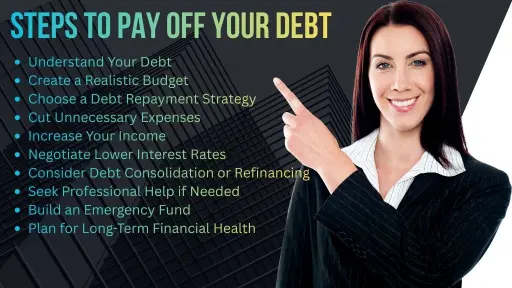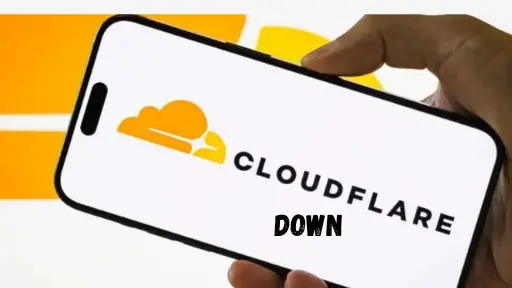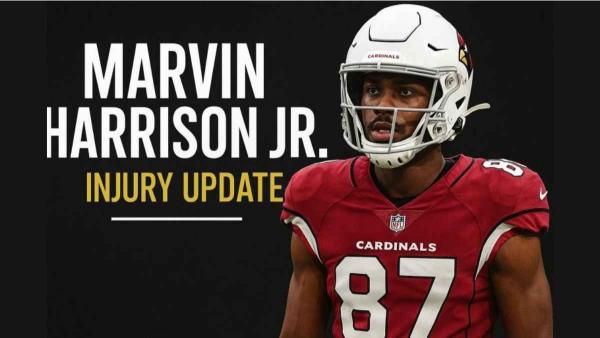Proven Steps to Finally Pay Off Your Debt and Save Money | Eliminate Credit Card, Student, and Personal Loans
How to Get Out of Debt: Debt can feel overwhelming, stressful, and sometimes impossible to manage. With U.S. consumer debt exceeding $1.77 trillion in 2025, more people than ever are seeking ways to regain control over their finances. Whether it’s credit card debt, personal loans, student loans, or medical bills, creating a clear plan is the first step toward financial freedom.
This guide offers practical, actionable strategies to help you tackle debt effectively. You’ll learn how to understand your debt, choose the best repayment methods, negotiate with creditors, avoid future debt, and manage the stress that comes with owing money. By the end, you’ll have a clear roadmap to reduce your debt and take full control of your financial future.
How to Get Out of Debt Fast? Step-by-Step
On average, an American owes over $104,000 in total debt, including mortgage, student loans, credit cards, and car loans. Just the debt excluding a home (like credit cards, student loans, and car loans) is about $23,317 per person. If you’re reading this, it’s time to start working toward paying it all off. Follow these strategies to tackle your debt quickly and take control of your finances.
Understand Your Debt
Before taking any action, it’s crucial to understand exactly what you owe. Start by listing all debts, including:
- Credit cards
- Personal loans
- Auto loans
- Student loans
- Medical bills
For each debt, note the balance, interest rate, minimum monthly payment, and due date. This clarity will help you prioritize debts and create a repayment plan that works for you. Understanding your debt is the foundation of successful debt management.
Mindset and Motivation | The Psychological Side
Getting out of debt isn’t just about numbers; it’s about mindset. Many people struggle with “debt fatigue,” losing motivation because progress feels slow.
Tips to stay motivated:
- Celebrate small wins: Paying off even a small debt is progress.
- Track your progress: Use a debt tracker app or spreadsheet to visualize your journey.
- Set realistic goals: Don’t overcommit; small, consistent steps matter more than extreme shortcuts.
By keeping a positive, proactive mindset, you increase the likelihood of sticking to your plan.
Must Read: How is Discretionary Income Calculated for Student Loan Payments
Choose a Repayment Strategy
Two common strategies for paying off debt are snowball and avalanche methods.
- Snowball Method: Pay off the smallest debts first to gain momentum.
- Avalanche Method: Focus on debts with the highest interest rates to save money over time.
Pro tip for 2026: You can combine both strategies. Use snowball for motivation and avalanche for high-interest loans. For example, pay off your $500 small credit card first (snowball) while directing extra money to your 18% interest credit card (avalanche).
Negotiate and Settle Debt
Negotiating with creditors can lower your interest rates, reduce monthly payments, or settle your debt for less than you owe.
Steps to negotiate:
- Prepare your finances: Know your income, expenses, and what you can realistically pay.
- Contact the creditor: Explain your situation honestly and ask for hardship programs, lower rates, or payment plans.
- Get it in writing: Always confirm agreements via email or letter.
Warning: Debt settlement can affect your credit score, but it may be worth it if you’re struggling to make payments.
Building Your Repayment Plan
Once you understand your debt and repayment strategy, create a structured plan:
- Use extra cash wisely: Side income, bonuses, or tax refunds can accelerate debt repayment.
- Automate payments: Reduce missed payments and stay consistent.
- Apply windfalls to principal: Every extra dollar goes toward reducing debt faster.
Consistency and discipline are key. Even small extra payments make a significant difference over time.
Avoiding New Debt
Getting out of debt is only half the battle; avoiding new debt ensures long-term financial health.
Tips for avoiding new debt:
- Build an emergency fund (3–6 months of expenses)
- Track your spending and budget monthly
- Cancel unnecessary subscriptions and recurring payments
- Avoid using credit cards for purchases you can’t pay off immediately
By creating a financial cushion and practicing discipline, you can prevent falling back into debt.
When to Seek Professional Help
Sometimes professional guidance is necessary, especially for large or complex debts.
Options:
- Credit counselors: Non-profit advisors who help structure repayment plans.
- Debt management plans (DMPs): Consolidate payments with one monthly plan, usually via a counselor.
- Licensed debt relief or insolvency professionals: Can assist with legal solutions like bankruptcy (last resort).
Warning: Avoid debt-relief scams. Check credentials and read reviews before choosing any service.
Country/Region-Specific Legal Options
If your debt situation requires formal legal solutions, options vary by country:
- UK: Debt Relief Orders (DROs), Individual Voluntary Arrangements (IVAs), “Breathing Space” for pause on payments (gov.uk).
- Canada: Licensed Insolvency Trustees (LITs) can help with structured repayment or bankruptcy (ised-isde.canada.ca).
- US: Consumer Credit Counseling Agencies (CCCs) or Debt Management Plans.
Knowing your legal options ensures you don’t miss programs that could protect you from aggressive collections.
Mental Health and Debt
Debt stress is real and can affect your mental health. Feeling overwhelmed, anxious, or depressed is common.
Tips to manage stress while in debt:
- Take breaks when needed—don’t obsess over daily payments.
- Celebrate milestones: paying off one card or loan is progress.
- Seek emotional support: friends, family, or professional counseling can help.
Remember, debt management is as much emotional as financial.
Tools, Templates and Resources
Provide readers with actionable tools to implement strategies:
- Budget + debt tracker worksheet – track all debts, interest rates, and payments.
- Negotiation email template – sample message to creditors for lowering rates or arranging payments.
- Apps & websites – Mint, YNAB, Credible, or debt tracker apps for automating payments and budgeting.
These tools make the plan easy to follow and actionable.
Conclusion
Getting out of debt in is achievable with a clear plan, discipline, and a positive mindset. Start by understanding your debt, choosing a repayment strategy, negotiating where possible, and avoiding future debt. Combine this with mental health awareness and professional guidance if necessary.
Every small step counts. Begin today, and take control of your financial future.
FAQs
1. What is the fastest way to get out of debt?
The fastest way to get out of debt is to combine a smart repayment strategy with increased income and reduced expenses. Using methods like the Avalanche (highest interest first) or Snowball (smallest debt first) along with side hustles or extra payments can help you pay off debt 2–3× faster.
2. How do I know which debts to pay off first?
Prioritize high-interest unsecured debt, like credit cards (19–29%), first. Next, focus on personal loans, car loans, and then student loans. You can follow the Avalanche method to save money on interest or the Snowball method to stay motivated with quick wins.
3. Will negotiating my debt lower my interest rates?
Yes. Many lenders respond well if you call and request a lower interest rate, especially if you have a good payment history. In 2025, success rates for negotiating credit card rates are around 60–80%, which can save you hundreds or even thousands over time.
4. How much should I budget for debt repayment each month?
A good starting point is the 50/20/30 rule: 50% of income for needs, 20% for debt and savings, 30% for wants. Cutting unnecessary spending like subscriptions, food delivery, or “buy now, pay later” plans can free up extra money to accelerate debt payoff.
5. Can I get professional help to manage my debt?
Yes. Nonprofit credit counseling services are available for free or low cost ($0–$39/month). For larger debts, debt settlement (15–25% of debt) or bankruptcy (Ch.7 or Ch.13, $1,500–$3,500) can be considered, though bankruptcy should only be a last resort.
6. How do side hustles help me get out of debt faster?
Side hustles increase your income, allowing you to make extra payments toward debt. Popular options include freelancing ($800–$4,000/month), delivery services ($1,200–$2,500/month), virtual assisting ($1,500–$3,000/month), or selling unused items ($500–$2,000 one-time). People using side income often pay off debt 3–4× faster.
7. What should I do after paying off my debt?
After clearing your debts, build an emergency fund of 3–6 months of expenses and redirect old debt payments into investments, retirement accounts, or savings. Keep one credit card, pay it in full each month, and maintain a high credit score (780+) to stay financially healthy.
8. How can I get out of debt with no money?
Even with little or no extra cash, you can start by tracking all expenses, cutting unnecessary spending, and using the Snowball method to pay off small debts first. Even small payments consistently applied make a difference over time.
9. Is it better to pay off debt or save money?
Focus on high-interest debt first while keeping a small emergency fund ($500–$1,000). Paying off debt reduces interest costs and financial stress, which often outweighs the benefits of saving small amounts.
10. Can debt consolidation help me?
Yes. Debt consolidation can combine multiple debts into one single payment at a lower interest rate. Options include personal loans or balance transfer credit cards, but avoid extending repayment too long as it can increase total interest.
11. Will paying only minimum payments help me get out of debt?
No. Minimum payments mostly cover interest, especially on credit cards, which makes it take years to pay off the balance. Focus on paying extra whenever possible to reduce principal faster.
12. How do I deal with credit card debt quickly?
Use the Avalanche method to target the card with the highest interest first. Negotiate lower rates, transfer balances to a 0% APR card, and cut discretionary spending to free up extra payments.
13. Can I get out of student loan debt faster?
Yes. Options include refinancing private loans at lower interest, paying extra when possible, or using side income to make additional payments. Keep in mind that refinancing federal loans may eliminate forgiveness or income-driven plan benefits.
14. How do I stop accumulating debt while paying off old debts?
Track spending closely, avoid “buy now, pay later” plans, cancel unnecessary subscriptions, and prioritize needs over wants. Using a strict budget like 50/20/30 ensures you stay on track.
15. Does negotiating with lenders affect my credit score?
No, asking for a lower interest rate or payment plan usually doesn’t impact your credit. However, missing payments or settling debts for less than owed can have an effect, so always negotiate responsibly.
16. How long does it take to get out of debt?
It depends on debt amount, repayment method, and extra income. Using strategies like the Snowball or Avalanche method, combined with side hustles, people can cut payoff time by 30–50% compared to minimum payments.
17. What are the best tools to track and manage debt?
Free or low-cost tools include:
- Undebt.it (visual payoff planner)
- Debt Payoff Planner (calendar-based tracking)
- Rocket Money (subscription and expense tracking)
- YNAB and Monarch Money (budgeting and net-worth tracking)
- PowerPay.org (college loan calculators)







